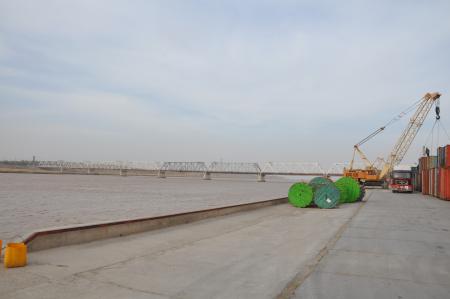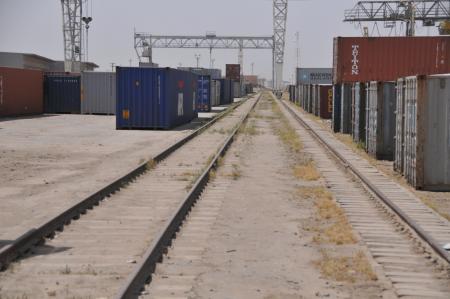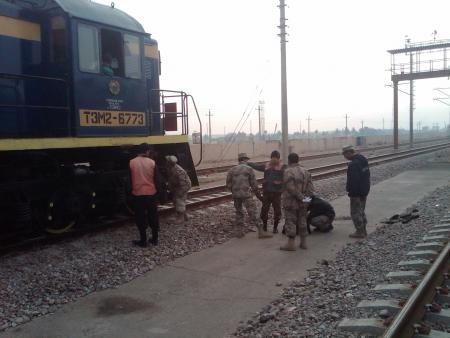“Gate could open doors to something much bigger” is a 29 April 2011 report on the Hayratan border facilities by Philip Grey, military affairs reporter of The Leaf-Chronicle, who is embedded with the US 101st Airborne Division in Afghanistan.
Some highlights:
- “The Hairaton Gate Border Crossing rail facility, after years of post-Soviet invasion neglect, is beginning to garner renewed attention and resources as an important piece of the economic effort in Afghanistan.”
- “Commerce and freight is moving through here – a lot of it. The majority of fuel coming into Afghanistan, for example, moves through this point”
- “the Afghans are also getting some help from Uzbek railway contractors, whom Maj. Wentworth calls some of the best in the world”
There also photos of the Hayratan facilties, and a Colin Kelly/Military Times video dated 27 April 2011 which suggest the “about 72 km” railway to Mazar-i-Sharif is operational.
There seems to be a rebranding of the Friendship Bridge as the Freedom Bridge, which I have also seen in reports elsewhere. Different name, or different translation?
A linked 30 April 2011 article (the Leaf Chronicle website’s dates seem a bit broken, changing depending where you click – I’ve found an article which apparently isn’t going to be written for another two years!), ‘Most Diverse Force’ keeps train rolling in Afghanistan, gives some more details of what is happening at the Afghan-Uzbek border:
For example, there is the mission to develop the Northern Distribution Network in Afghanistan, of which the centerpiece is the rail yard at Hairaton Gate. The 101st SB team on the ground has been tasked with teaching the Afghans how to handle the complex issues of cross-border commerce and the utilization of road and rail assets to restore the economy of the region for the long term, a mission that will greatly improve the U.S. military’s logistical situation in the near term if it is successful.
The effort requires more than logistical skills. It requires a genuine, full-fledged effort at partnering with the Afghans as equals, requiring a flexible mindset and reams of patience.
[More…]
And a 29 April 2011 story about a visit to the Friendship (or Freedom) Bridge: Afghan officials bristle at bridge photos:
Frankly, the bridge itself is no great shakes to look at, being a completely utilitarian piece of Soviet construction totally absent of any aesthetic value. In other words, it’s kind of ugly, gray and dull, which describes about 90 percent (being charitable) of everything built by the Russians during the Soviet era.
However, the bridge is a big deal to the Afghans – not because the Soviets built it, but because they used it to leave. As a matter of fact, the Afghans just celebrated that event a few days ago, on April 27.
[More…]



